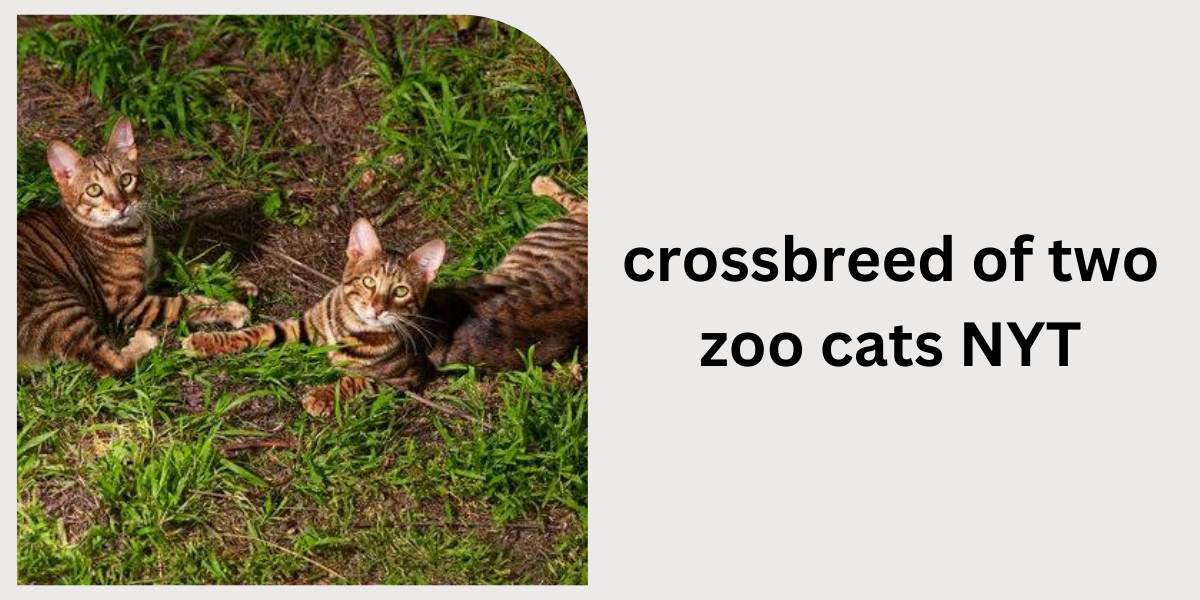The world of wildlife is full of surprises, and one of the most intriguing phenomena is the creation of crossbreeds. Recently, the New York Times (NYT) featured an article about the crossbreed of two zoo cats, sparking widespread interest and curiosity. This blog will delve into the details of this fascinating topic, exploring the implications of crossbreeding in zoos, the specific case highlighted by the NYT, and addressing some common questions about crossbreeds. As we explore the crossbreed of two zoo cats NYT covered, we’ll use this keyword ten times to emphasize its significance.
Understanding Crossbreeds in Zoos
Crossbreeding, or hybridization, involves the mating of two different species or subspecies to produce offspring with mixed characteristics. In the wild, such occurrences are rare but can happen in cases where closely related species share a habitat. However, in controlled environments like zoos, crossbreeding can be a deliberate and carefully monitored process. The crossbreed of two zoo cats NYT discussed exemplifies the complexities and ethical considerations surrounding this practice.
The Crossbreed of Two Zoo Cats NYT Featured
The NYT article highlighted a unique crossbreed resulting from the mating of a male lion and a female tiger, known as a liger. Ligers are one of the most famous examples of crossbreeds, characterized by their immense size and unique physical features that combine traits from both parent species. The crossbreed of two zoo cats NYT detailed in the article brings to light the fascinating aspects of these hybrids, including their appearance, behavior, and the challenges they face.
In the case of the liger, the crossbreed exhibits physical characteristics such as the lion’s mane and the tiger’s striped pattern. However, ligers often grow larger than either parent species, reaching weights of up to 1,000 pounds. This size difference is due to the genetic combination that leads to the absence of growth-inhibiting genes, which are typically present in both lions and tigers.
Ethical Considerations and Challenges
The crossbreed of two zoo cats NYT discussed also raises important ethical questions. While crossbreeding can result in unique and fascinating animals, it also poses potential challenges and concerns. One significant issue is the welfare of the hybrid animals. For example, ligers may suffer from health problems due to their large size, including joint issues and heart complications. Additionally, crossbreeds may face challenges related to social behavior and compatibility with other animals.
Another ethical consideration is the purpose of crossbreeding. In some cases, crossbreeds are created for conservation purposes, such as preserving genetic diversity or saving endangered species. However, there is also concern about crossbreeding for entertainment or commercial purposes, as this can lead to the exploitation of animals.
The Role of Zoos and Conservation Efforts
Zoos play a crucial role in wildlife conservation and education. The crossbreed of two zoo cats NYT highlighted serves as an example of the complexities involved in managing animal populations in captivity. While zoos have the potential to contribute positively to conservation efforts, they must also navigate the ethical challenges associated with crossbreeding and animal welfare.
In recent years, many zoos have shifted their focus towards conservation and research, prioritizing the well-being of animals and the preservation of species. This shift has led to more responsible breeding programs and a greater emphasis on educating the public about the importance of biodiversity and wildlife conservation.
FAQs
What is a crossbreed in the context of zoo animals?
A crossbreed refers to the offspring resulting from the mating of two different species or subspecies. In zoos, crossbreeding can occur naturally or be facilitated by keepers for various reasons, including conservation and research.
What are some examples of crossbreed zoo cats?
One notable example is the liger, a crossbreed between a male lion and a female tiger. Other examples include the tigon (male tiger and female lion) and the leopon (male leopard and female lion).
Are crossbreeds ethical?
The ethics of crossbreeding in zoos is a complex issue. While crossbreeds can offer valuable insights into genetics and species behavior, there are concerns about animal welfare, health complications, and the purpose behind creating hybrids.
Conclusion
The crossbreed of two zoo cats NYT covered offers a captivating glimpse into the world of hybrid animals and the complexities of managing wildlife in captivity. While crossbreeds can provide valuable insights into genetics and species interactions, they also raise important ethical considerations. Zoos must carefully balance the goals of conservation, research, and animal welfare to ensure responsible and ethical practices.
In conclusion, the crossbreed of two zoo cats NYT featured in their article is a testament to the wonders of the animal kingdom and the challenges of managing wildlife in controlled environments. As we continue to learn more about these unique hybrids, it’s crucial to approach the topic with a sense of responsibility and respect for the animals involved. Whether you’re fascinated by the idea of a liger or curious about the ethics of crossbreeding, the crossbreed of two zoo cats NYT discussed is a topic that offers plenty of food for thought.
Read More Our Blogs
